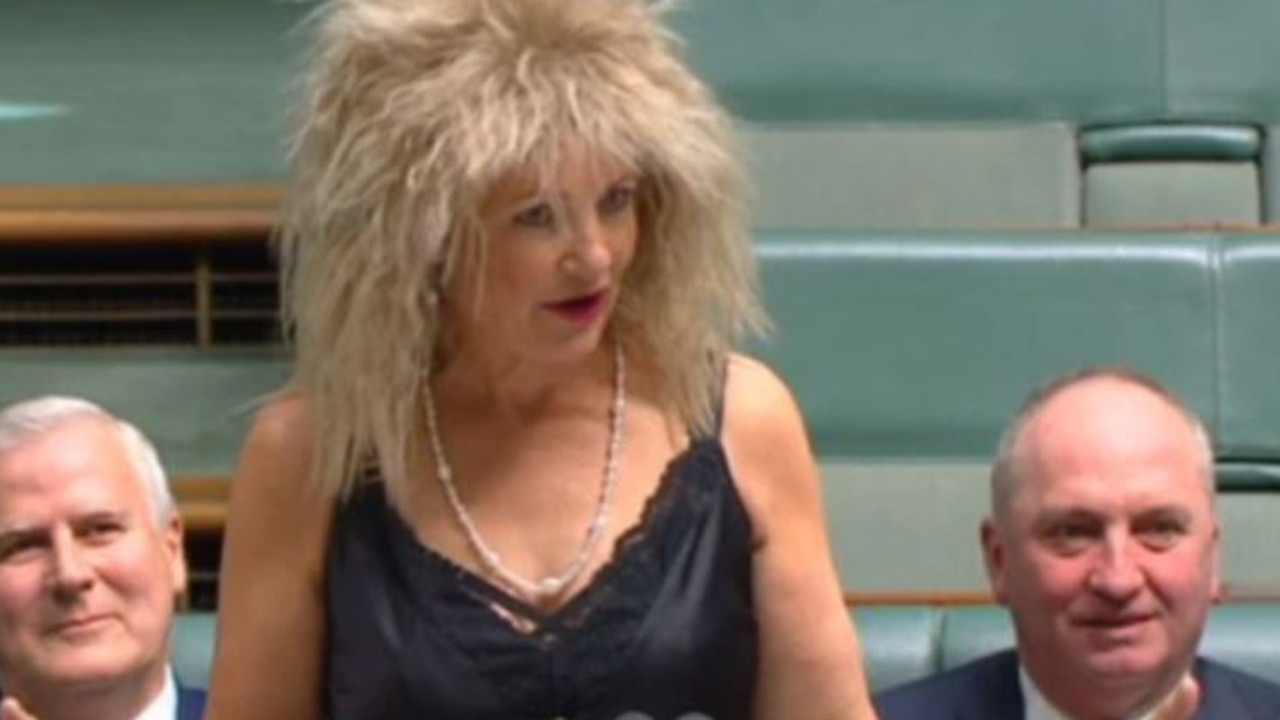Worrying sign Australia’s housing crisis is about to deepen
It’s a small detail in Labor’s budget, but this number could set the path for Australia’s housing crisis and it’s a worrying forecast.

ANALYSIS
While the nation hand-wrings over one of the worst housing shortages in history, buried in the appendix of Budget Paper 3 was the Federal Government’s official net overseas migration (NOM) forecast, which has been aggressively increased.
Below is the NOM table from the October 2022 federal budget, which forecast 235,000 NOM each year over the four-year forward estimates:
And here is the revised NOM forecast from Tuesday’s federal budget:
NOM is now expected to hit a record high of 400,000 in 2022-23 before falling to 315,000 in 2023-24. Then it will fall to 260,000, where it will stay over the forward estimates.
Thus, the latest budget has locked in a permanently higher NOM that is 25,000 higher than the 235,000 projection contained in the previous budget, the 2021 Intergenerational Report, and the 2023 Population Statement.
For all the claims made by Home Affairs Minister Clare O’Neil that Labor is not delivering a ‘Big Australia’, the federal budget’s latest forecasts certainly say otherwise.
This projected long-term NOM of 260,000 is 40,000 higher than the ‘Big Australia’ immigration the nation experienced in the 15 years leading up to the pandemic, which averaged around 220,000 a year:
This ramp-up in immigration has been engineered by the Albanese Government via:
• extending the number of hours students can work and the length of their stay in Australia after graduation
• employing 500 people to clear the “one million” visa backlog as quickly as possible
• lifting the annual permanent non-humanitarian migrant intake to a record high of 195,000 (from 160,000)
• easing entry requirements for Indian students and workers
Five Canberra’s worth of population in five years
The absurdity of Australia’s housing predicament is neatly encapsulated by the federal budget’s population forecasts, which are outlined in the table below:
Australia’s population is officially projected to increase by 2.18 million people in the five years to 2026-27, or by an average of 435,200 people each year.
To put that figure into perspective, it is equivalent to adding a Canberra’s worth of people to Australia’s current population each year for five years, but obviously without the housing and infrastructure to match.
Or put another way, it is the equivalent to adding another Perth to Australia’s population in only five years.
Catering for such a huge increase in population is an insurmountable task under the best housing conditions.
It is even worse when the entire home building industry is on its knees suffering from widespread insolvencies amid soaring materials prices and financing (interest rate) costs.
According to ASIC data, 1672 home builders have gone into insolvency so far in 2022-23.
That’s the highest number of insolvencies since 1802 building firms went bust 2014, with two months still to go this financial year.
The insolvencies include industry giants like Porter Davis Homes, which went into administration in March with over 1500 homes partially completed, alongside a raft of smaller players.
All up, builders behind more than 5200 homes, worth a collective $2.2 billion, are estimated to have collapsed since 2021.
The upshot is that there are now fewer builders left standing to supply the nation’s homes in the face of the unrelenting immigration demand.
This means the housing crisis will deepen, which will manifest in soaring rents and increased homelessness.
The extent of the housing crisis facing Australia is neatly encapsulated in the next chart showing dwelling completions against actual and projected population growth, as set out in the federal budget:
As you can see, Australia did not build enough homes in the 15 years of “Big Australia” immigration leading up to the pandemic.
Now the housing supply situation is certain to deteriorate further given actual construction levels are falling at the same time as Australia is projected to experience record population growth of between 400,000 and 500,000 people a year.
Labor’s supply-side solutions are chicken feed
Speaking during Question Time before the federal budget, Federal Housing Minister Julie Collins claimed Australia is facing a “supply issue” with housing that has been going on for a long time.
“We have less homes per 1000 people in Australia than the OECD average,” Ms Collins said.
“Which is why we need to build more, which is what the National Housing Accord is about.”
The centrepiece of the Albanese Government’s National Housing Accord is the Housing Australia Future Fund (HAFF), which intends to help fund 30,000 additional social and affordable rental homes over its first five years.
Anybody with Year 6 maths skills would be able to work out that the 6000 new social and affordable homes that are targeted for construction each year pales into insignificance against the projected annual population increase of 400,000 to 500,000 people.
Labor’s HAFF is a literal “drop in the ocean” that will see Australia’s housing shortage continue to worsen in the face of the Government’s excessive immigration policy.
Ms Collins’ comments about supply are also disingenuous. Australia managed to ramp-up construction levels significantly in the years leading up to the pandemic (see above chart).
In fact, Australia has built far more homes per capita than the OECD average:
The problem is that Australia has also run one of the world’s largest immigration programs, which has ensured that housing demand has forever run ahead of supply – a situation that will only worsen under the budget’s extreme immigration settings.
If the Albanese Government genuinely cared about ending the nation’s housing shortage, it would run an immigration program significantly lower than the growth of the overall dwelling stock, not the other way around.
It’s time to stop scapegoating a ‘lack of supply’ and speak honestly and openly about the issue.
Australia will never build enough homes so long as its population continues to grow like a science experiment via extreme levels of immigration.
Australia’s housing problem is really an excessive immigration problem.
Leith van Onselen is co-founder of MacroBusiness.com.au and chief economist at the MB Fund and MB Super. Leith has previously worked at the Australian Treasury, Victorian Treasury and Goldman Sachs.





